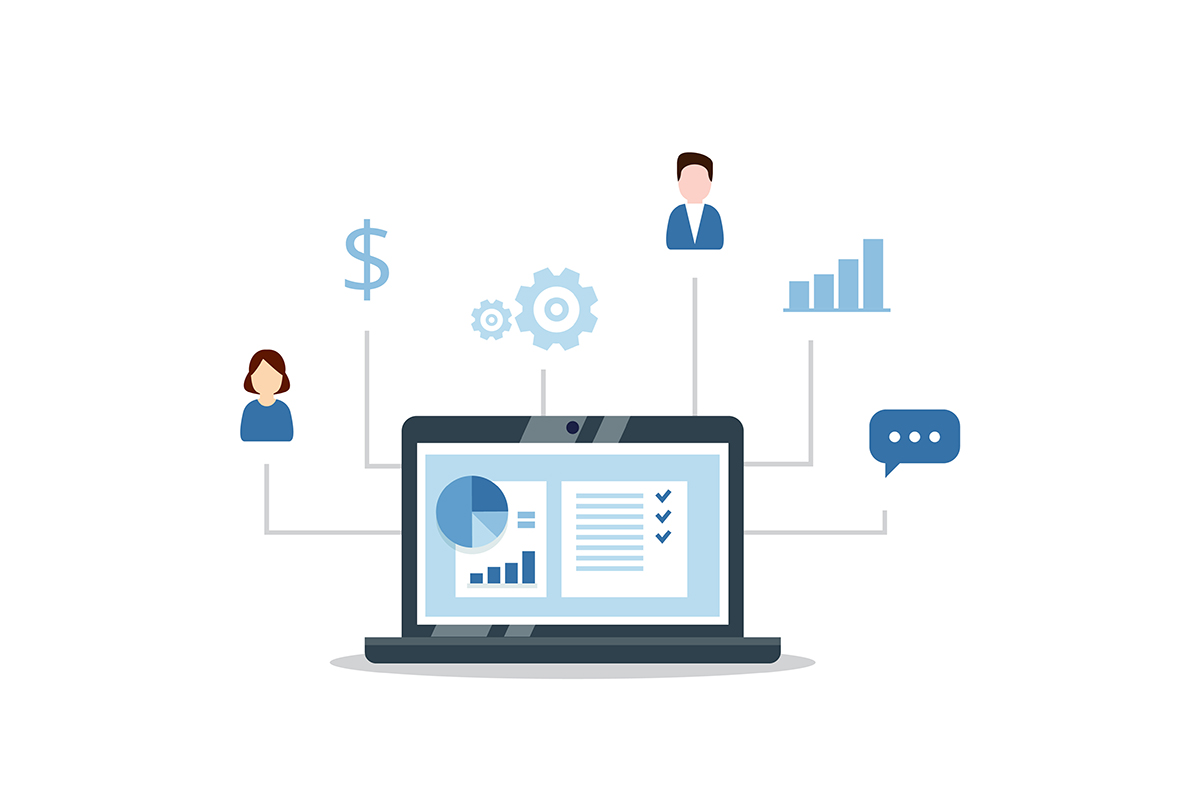
The Five Current Challenges in Industrial Customer Service:
- Fast problem solving for the customer
- Rapid availability of data
- Challenge of the multitude of different enquiry channels
- Collaboration between customer service and customers
- Increasing customer satisfaction
Fast Problem Solving for the Customer
Customer service in industry demands, above all, quick help in the event of problems. Minimising plant downtimes and the associated production losses is an important challenge here.
Optimisation in the Process
In order to use the available resources in customer service in the best possible way for the customer, it is worthwhile to critically examine the processes again and again. How are the enquiries processed? Is there a sensible prioritisation? What is the quickest way for the service employee to get the information he needs about the customer?

Here it is important to develop structures for the customer service department on the basis of which enquiries are processed transparently. A guideline created in this way ensures security for the employees and speeds up the processes.
In addition, it is important to set up a data pool with problems and the appropriate solutions, which every service employee can access.
All service cases that have already been processed as well as their solutions should be stored here. In this way, employees can search for solutions by entering short keywords without having to search again each time.
Help Yourself Services
Questions that occur particularly frequently take up an unnecessary amount of time if they are answered personally each time. Once these questions and problems have been identified, they should be handled with the help of automated answers, for example through chat bots. It relieves the burden on customer service, which can deal with the more difficult cases more efficiently, and the customer gets a response within a few seconds of their request.
Rapid Availability of Data
In plant engineering, it has already become established that a labelling machine, for example, independently transmits an error log to the manufacturer, and the responsible service employee has all the data he needs at his disposal to help quickly and efficiently.
Remote Service and Predictive Maintenance
The possibility of using the Remote Service tool, i.e. remote maintenance, will gradually spread to many areas of industry.

This is because it minimises the time lost in processing requests and thus also increases the productivity of the customer's plant, as well as significantly improving the response time.
On the basis of the data transmitted with predictive mainteance, the after-sales service can also be optimised because it is possible to react proactively.
If a system reports the wear of a component at regular intervals, the service department is prepared and can react in time. It therefore makes sense to integrate remote service into the range of services.
Service via Smartglasses
In addition, the service offer can be extended with the use of data glasses. With the use of such glasses, the customer can precisely show the service employee his current problem and the employee can guide the customer to correct errors and carry out repairs independently - as if he were standing next to him. The use of such glasses saves a lot of time, as the technician does not have to travel to the site first, but is available immediately in the best case. And in special situations, such as those currently caused by contact restrictions due to the Corona pandemic, a contactless on-site service can be offered.
Challenge of the Multitude of Different Enquiry Channels
Service employees receive inquiries in a wide variety of ways. While just a few years ago communication was mainly by telephone and fax, channels such as e-mail, self-service portals and online forms in particular have now been added. The industry now expects customers to be provided with a variety of communication channels so that they can make contact in a way that is tailored to their needs.

In order to maintain an overview here, to be able to categorize and to provide assistance as quickly as possible, it is important to bundle all these different channels on one intelligent system. This system must meet important criteria so that it can be used in a meaningful way.
It must help prioritize requests through intelligent programming so that customer service can process them according to urgency. And it must do this regardless of whether the problem is brought to the service department by fax or phone. It must sort whether a personal response or contact is necessary or whether the customer can be helped with an automated response. It must also have all the relevant data ready so that the service department has all the information it needs to solve a problem. These high requirements can only be achieved with a CRM system that is optimally adapted to the needs, which requires a complex IT environment. Competitiveness is therefore always linked to high-performance IT.
Collaboration Between Customer Service and Customers
When a customer from industry contacts a customer service department, he expects fast and, above all, competent help. Speed of response and the quality of help are therefore also the decisive criteria here, which can lead to good and lasting customer loyalty.
Customer Loyalty as a Purchase Decision
The price and performance of a system are, of course, decisive factors in the decision to buy a particular product. The challenge here is to stand out further with additional benefits for the customer. And it is often this customer loyalty that makes the difference in a purchase decision. It is therefore all the more important to make this valuable contact as positive as possible for the customer.

On the one hand, this must be done through targeted training of employees to enable them to move from being a contact person to a reliable partner. Competent help in the event of service increases customer loyalty enormously.
On the other hand, IT is once again in demand. Many companies still handle their service in an analog way. Without the support of a database and without documenting service cases, no customer history can be created that every employee in the service center can access. As a result, important response time is lost and customers do not feel well looked after if they have to start from scratch each time they describe the problems.
Increasing Customer Satisfaction
Once a good bond has been established with the customer, another challenge is to keep it. This is not a matter of course. In the long term, customer loyalty will only work if customer satisfaction is continuously monitored.
Feedback from the Customer
Many companies have not yet developed a method for themselves to determine whether their customers are satisfied and whether customer service is therefore targeting the right areas. As a result, these companies are depriving themselves of the opportunity to identify and exploit potential for improvement.

The easiest way to find out whether and how satisfied a customer is is, of course, to talk to them directly. To save time, customer feedback can also be obtained online with targeted questions in feedback forms and online forms. It is important that such surveys do not take up too much of the customer's time and are easy to complete.
But simply collecting the data is not enough. The information obtained in this way must be evaluated in a targeted manner in order to adapt and improve services.
If the questionnaires are expanded to include comment fields in which customers can enter free text, valuable insights can be gained into customers' everyday working lives. This can often lead to adjustments in customer service that significantly increase customer satisfaction. A simple further building block in customer service to meet the ever-increasing challenge.